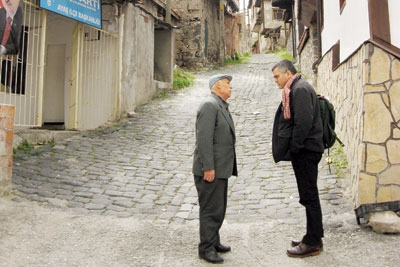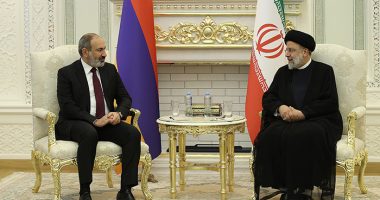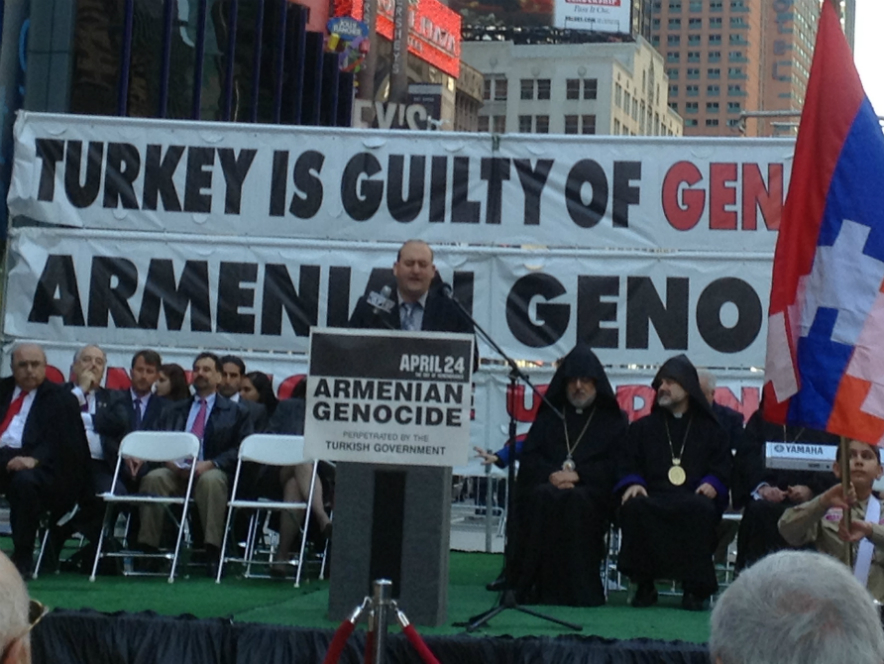

By Wolfgang & Sigrid Gust (Ed.)
Our book is dealing in depth with the Armenian Genocide during World War I. It is a compilation of official documents from the German Foreign Ministry at the time when Germany was the most important ally of Turkey. At that time, German consuls were present in most parts of eastern Turkey (except Van), where the majority of Armenians suffered and perished. German diplomats and informants collected eyewitness reports and other material and were able to send all these documents to the German Embassy in Constantinople. As they could use ciphered telegrams which were not accessible even by the Austrian ally, and certainly not by the American diplomats, all documents were send without any censorship.
Therefore, these reports from the German consuls and their informants give an authentic picture of the deportation and killings of Armenian people in an intensity only comparable to the American documentation. But there is one major difference: the German reports were transferred in real time, whereas most of the American reports were written years later. Another important difference is that the German diplomats were much closer to the Turkish officials than the Americans, due to their political and military partnership.
The reports of the German ambassadors in Constantinople included two aspects. Firstly, they reported directly to Berlin what they had heard from their consuls and informants. Secondly, they collected and forwarded documents in which the interference of the major Turkish politicians (particularly Talaat, Enver, Djemal and Halil) with German acting and thinking was evident.
The documents from inside the German Foreign Ministry in Berlin demonstrate the German policy concerning Turkey and the so called “Armenian question”: whereas most of the German consuls and their eyewitnesses very much expressed sympathy for the Armenians, the higher ranking Germans in Berlin were executing German “Realpolitik” in quite another sense. To give one example: After the German Christian community was worried by reports from Turkey, chancellor Bethmann Hollweg promised solidarity with the Christians and therefore also with the Armenians. In reality, he was close to the Turkish ally. In response to a telegram from the German Ambassador Wolff-Metternich asking for less consideration for Turkey but more moral help for the Armenians, Bethmann Hollweg wrote: “Our only aim is to keep Turkey on our side until the end of the war, no matter whether as a result Armenians do perish or not.”
In 1919, the German Johannes Lepsius, a well known friend of the Armenians, published a part of these documents, but most of them were manipulated by the German Foreign Ministry. The purpose of this manipulation was to conceal the German co-responsibility due to the ongoing conference in Paris. It is unknown if those manipulations happened with the consent of Lepsius but probably they did not. Lepsius only got copies from the Ministry which he did not compare to the originals.
Our book is subdivided into four parts.
Part 1 compiles documents as testimony of the genocide. For most of the consuls and their informants there was no doubt that all actions were aimed at a complete annihilation of the Armenian people.
Part 2 gives a summary about German affirmations, hesitations and political actions at the German Embassy in Constantinople.
Part 3 deals with actions of important German officers against the Armenian people, including even German orders for deportations.
Finally, part 4 informs about the German political activities in Berlin and Constantinople, culminating in the conclusion that Germany has a clear co-responsibility for the Armenian genocide. This is based on the fact that the Germans finally accepted the deportation of all Armenians (except for those of Constantinople), including women and children, although knowing from the reports of their consuls that this would mean a death-warrant for most of them. While testimonies of the genocide are known from other sources, our documents of German co-responsibility are completely new and have never been published before.
The book will have approximately 800 pages in the original German version (ten percent less in the English version due to translation), consisting of about 650 pages for 240 documents (including 80 published by Lepsius but mostly in a falsified version), an introduction of 100 pages and other elements (preface, index, glossary etc.). If we manage to finance proofreading, typesetting, layout and printing, we could sell the book for Euro 50 each, allowing a high circulation with 2000 copies for Germany and 3000 English copies.
The Zoryan Institute paid 70,000 US$ for film-copies, a reader-printer and for the translation of about 300 documents. Therefore, the Institute will be mentioned as sponsor on the cover of the English version. Our financial requirements to finish the two books will be about Euro 10,000 for the remaining translations (introduction, prefaces, index etc) and about Euro 25,000 for proofreading, typesetting, layout and printing of each version, which makes a total of Euro 60,000. In return, this sponsor of this sum will be entitled to design the cover layout of the original German version as well as pages inside both versions.
The cover layout designed by a former Art-Director of the German Publisher Rowohlt could be send to you if you want.










